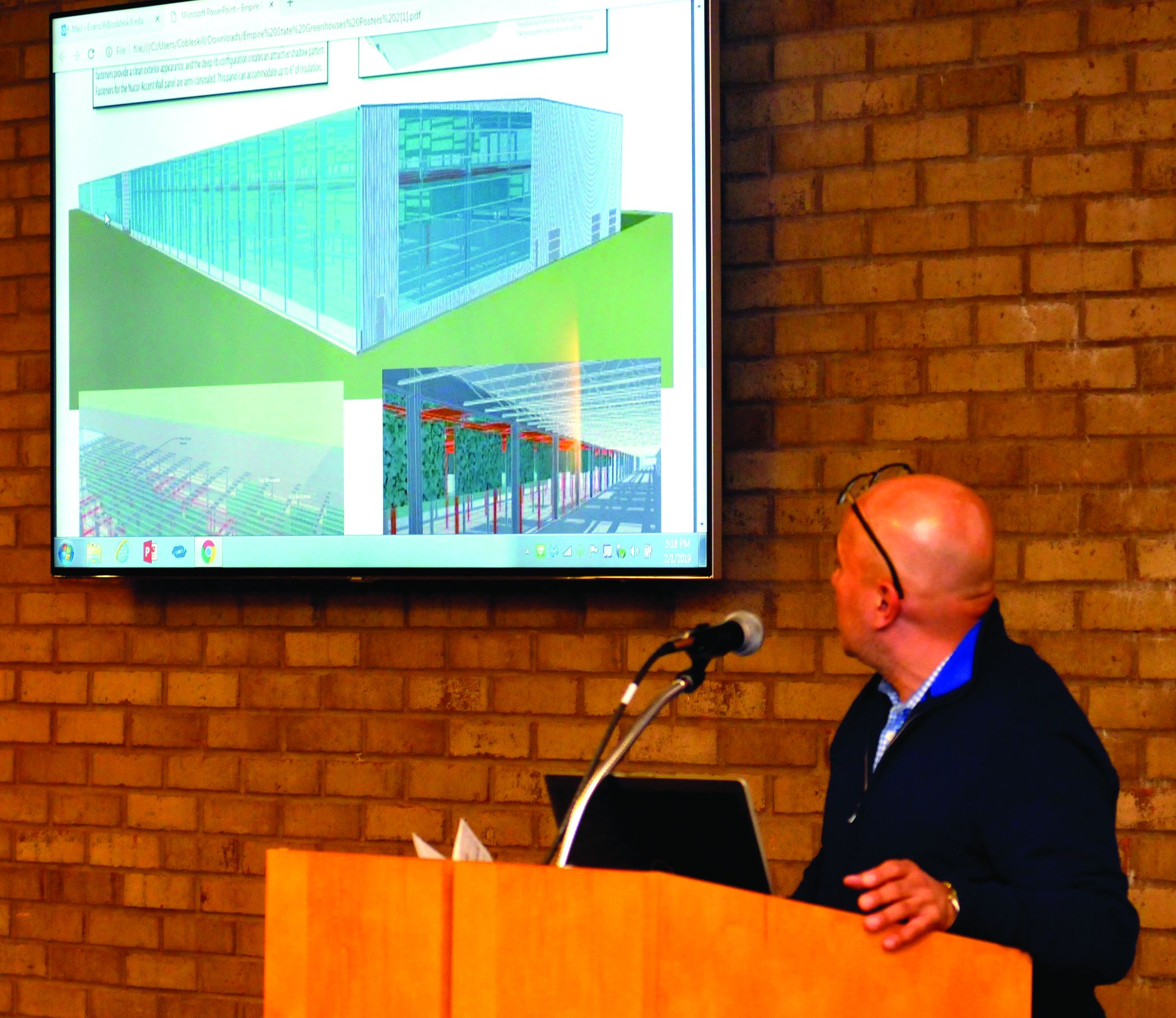Subscriptions
Menu
Advertisements
Cobleskill gets a look at huge greenhouse project
2/6/2019 |
By Patsy Nicosia |

Investors are optimistic they’ll be able to come up with $1 million in seed capital for their Empire State Greenhouse project at SUNY Cobleskill in the next month.
After that, they’ll need to raise another $7 million for design, engineering and permitting in either private equity financing or through leveraged USDA guaranteed loans.
And after that?
Groundbreaking on a vertical 300,000 square-foot state-of-the-art greenhouse Chobe Company’s Louis Ferro said will help feed the world.
Mr. Ferro and Boris Taylor, who’s also with the New York City-based consulting firm, detailed the $80,000 million project for about 35 people at SUNY Cobleskill on Friday.
It was the first of several public presentations that will be held on the project, said SUNY Cobleskill President Marion Terenzio and “just the beginning. We’re trying to make sure it aligns,” with the college and the community.
Just that day, said Jason Evans of the college’s Institute for Rural Vitality, the state designated the former Coby Farm on Mineral Springs Road, where the project would be built, as a START-UP NY site, making it eligible for 10 years of tax credits based on a projected 90 jobs.
The formal application process, Dr. Evans said, will begin this spring or summer.
But Mr. Ferro’s raring to go.
If the financing comes together, he said he’d like to break ground on the project, which will also include a biogas digester run on manure from local dairy farmers and facilities for on-site food processing and packing, before fall.
The generator itself will take a year to build, Mr. Ferro said; solar facilities and the greenhouses, considerably less.
Mr. Ferro said he first explored the idea for what’s become ESG in Virginia, but after years of hitting nothing but walls, he brought the idea home to New York, first to Cornell University and then to SUNY Cobleskill.
Initially, he said, Dr. Terenzio and Dr. Evans were leery.
But they’ve grown to believe in the project—which could become one of several in the region.
“It’s cutting edge technology,” Dr. Terenzio said, “and it’s a community-minded partnership. We’re very proud that they chose us. This community seems to be a perfect fit.”
Mr. Ferro said he’s motivated by the fact that by 2050, the worldwide need for food will be four times what it is today.
ESG will also be a nice fit with the college and the community, he said, creating 90 fulltime equivalent and 400 indirect jobs, as well as opportunities for SUNY Cobleskill students.
“We’re not reinventing the wheel,” added Mr. Taylor.
ESG won’t compete with local farmers, Mr. Ferro said, but will instead focus on out-of-season crops--—as many as 15 of them at a time--like tomatoes in the winter.
In addition, local farmers will be able to access the facility’s food processing and packing services.
“What people don’t realize is that 90 percent of our food comes from Mexico, California, Arizona…” Mr. Ferro said.
“We’re taking that food and growing it locally,” organically, with a single-day harvest, and likely, more cheaply.
ESG was a $5 million winner in the state’s 2018 REDC grants, but Dr. Evans pointed out that’s a reimbursement grant hinging on fulltime job creation.
“That’s what they have to do to shake it lose,” he said.
“This is the first of a number of evaluations. This project is huge so it’s in the very early stages. There’s plenty of time to incorporate your feedback.”









